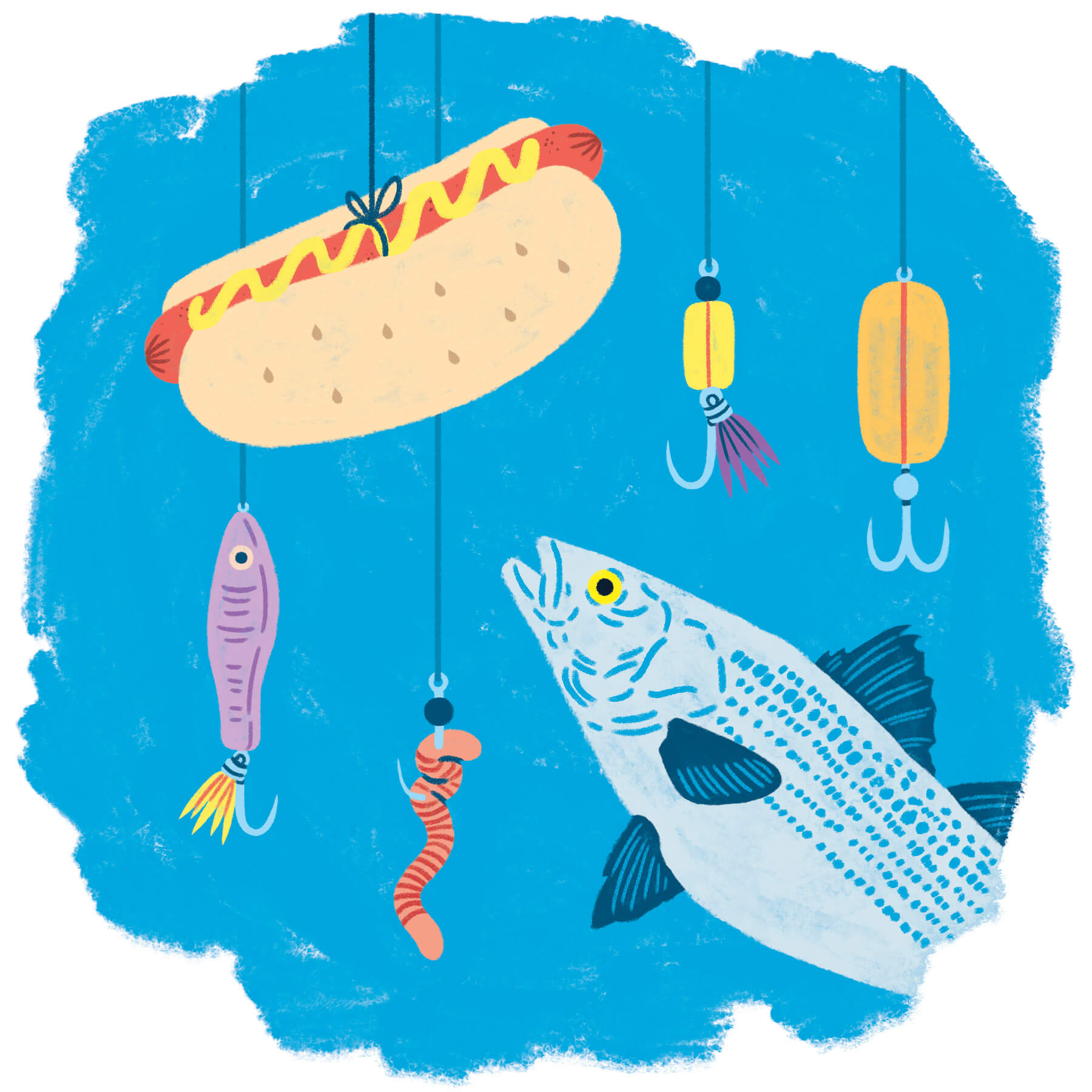
Catch A Fish
Do’s and don’ts of responsible striper fishing.
An avid fisherman, John Tiedemann has been angling striped bass for nearly 40 years. “They’re beautiful fish,” says the assistant dean of Monmouth’s School of Science and director of its Marine and Environmental Biology and Policy Program. “They can get very large, and they’re the classic game fish in that they put up a good fight.”
But the striper population nearly crashed in the 1970s due to overfishing and pollution, and these days there are strict size and possession limits on the fish, says Tiedemann. That means if you fish for stripers, at some point you’re going to have to release at least some of the fish you catch, he says.
Studies have shown that eight percent of stripers caught and released still die because of improper handling by anglers, says Tiedemann. To reduce that percentage, he created Stripers for the Future, an education and research campaign through which he and his students develop and promote best practices for catch and release.
Armed with data from scientific literature on best handling practices, Tiedemann and his students produced an easily digestible list of do’s and don’ts for handling the fish. They put that info on brochures, posters, and cards and distributed them to bait and tackle shops across New Jersey.
The researchers have also been accompanying local anglers out on the water, where they assess injuries and behavioral responses and check stress indicators on stripers the anglers handle. In the fall, the team will undertake similar work at the James J. Howard Marine Sciences Laboratory at Sandy Hook. Local anglers will be brought in to handle and grip the stripers in a controlled environment so the team can more closely assess how factors such as time out of water, holding the fish vertically versus horizontally, and using fish grips affects the striper. The data they’re collecting will help better inform anglers on how to properly handle and release the stripers they catch.
Tiedemann’s team is also doing DNA testing on clippings from striper pelvic fins. “We … can match it to the established DNA for their spawning grounds—primarily the Hudson and Delaware rivers and tributaries to the Chesapeake Bay,” says Tiedemann. “In the long run, it can help inform conservation. If a larger percentage is from one area, then we know we need to concentrate conservation efforts on that area.”
The bottom line, says Tiedemann, is he wants the fish to be angled, handled, and released in the best way possible to ensure their survival. So go ahead and fish for stripers, he says. If you’re on a boat, he suggests heading to the Shrewsbury Rocks off of Monmouth County’s northern coast. And if you’re surfcasting, try fishing off or near one of the rocky groins that dot the coast: Fouling organisms grow on the rocks and attract smaller baitfish, which in turn attract stripers, says Tiedemann. And when you do hook one, be sure to keep these do’s and don’ts in mind:
Do:
- Release the fish without taking it out of the water.
- Handle the fish with wet hands or gloves.
- Cradle the fish with one hand under the belly and one under the shoulder.
- Resuscitate the bass by pulling it forward or in a figure eight through the water by the lower lip. Never move it backward.
- Get the fish back in the water quickly! Try to limit air exposure to 15 seconds.
- Use barbless hooks for quick release.
- Use circle hooks when bait fishing.
- Leave deep hooks in the fish by cutting the leader off close to the hook.
Don’t:
- Lift the bass by the mouth or tail. This can cause serious internal injury.
- Handle bass with dry hands.
- Drag fish across dry sand or excessively handle fish in a manner that removes their protective mucous coating.
- Kick or step on fish. You will damage their internal organs.
- Touch the red gill rakers or gill area. They are the equivalent of your lungs.
- Gaff a fish you intend to release.
- Release a bass without first resuscitating it.
More information on responsible striper fishing is available here.